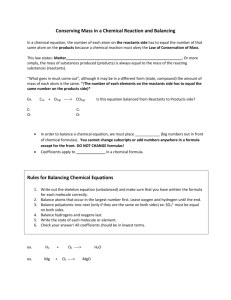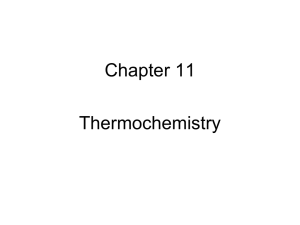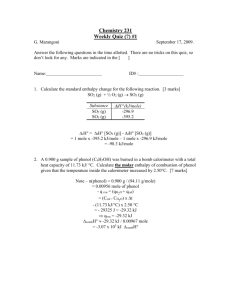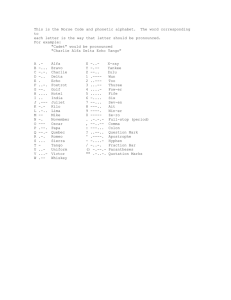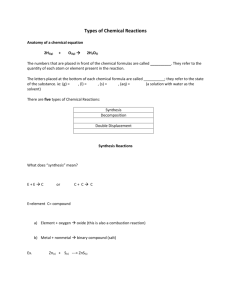HESS`S LAW and CALCULATING THE ENTHALPY OF
advertisement
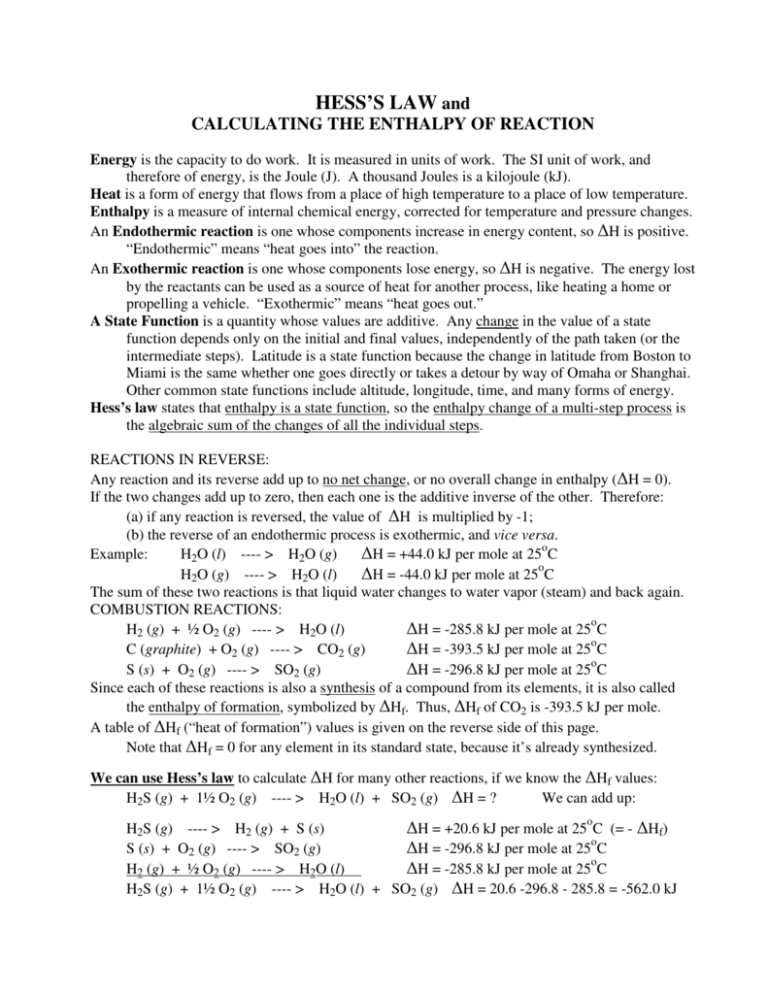
HESS’S LAW and CALCULATING THE ENTHALPY OF REACTION Energy is the capacity to do work. It is measured in units of work. The SI unit of work, and therefore of energy, is the Joule (J). A thousand Joules is a kilojoule (kJ). Heat is a form of energy that flows from a place of high temperature to a place of low temperature. Enthalpy is a measure of internal chemical energy, corrected for temperature and pressure changes. An Endothermic reaction is one whose components increase in energy content, so ∆H is positive. “Endothermic” means “heat goes into” the reaction. An Exothermic reaction is one whose components lose energy, so ∆H is negative. The energy lost by the reactants can be used as a source of heat for another process, like heating a home or propelling a vehicle. “Exothermic” means “heat goes out.” A State Function is a quantity whose values are additive. Any change in the value of a state function depends only on the initial and final values, independently of the path taken (or the intermediate steps). Latitude is a state function because the change in latitude from Boston to Miami is the same whether one goes directly or takes a detour by way of Omaha or Shanghai. Other common state functions include altitude, longitude, time, and many forms of energy. Hess’s law states that enthalpy is a state function, so the enthalpy change of a multi-step process is the algebraic sum of the changes of all the individual steps. REACTIONS IN REVERSE: Any reaction and its reverse add up to no net change, or no overall change in enthalpy (∆H = 0). If the two changes add up to zero, then each one is the additive inverse of the other. Therefore: (a) if any reaction is reversed, the value of ∆H is multiplied by -1; (b) the reverse of an endothermic process is exothermic, and vice versa. Example: H2O (l) ---- > H2O (g) ∆H = +44.0 kJ per mole at 25oC H2O (g) ---- > H2O (l) ∆H = -44.0 kJ per mole at 25oC The sum of these two reactions is that liquid water changes to water vapor (steam) and back again. COMBUSTION REACTIONS: H2 (g) + ½ O2 (g) ---- > H2O (l) ∆H = -285.8 kJ per mole at 25oC C (graphite) + O2 (g) ---- > CO2 (g) ∆H = -393.5 kJ per mole at 25oC S (s) + O2 (g) ---- > SO2 (g) ∆H = -296.8 kJ per mole at 25oC Since each of these reactions is also a synthesis of a compound from its elements, it is also called the enthalpy of formation, symbolized by ∆Hf. Thus, ∆Hf of CO2 is -393.5 kJ per mole. A table of ∆Hf (“heat of formation”) values is given on the reverse side of this page. Note that ∆Hf = 0 for any element in its standard state, because it’s already synthesized. We can use Hess’s law to calculate ∆H for many other reactions, if we know the ∆Hf values: H2S (g) + 1½ O2 (g) ---- > H2O (l) + SO2 (g) ∆H = ? We can add up: o H2S (g) ---- > H2 (g) + S (s) ∆H = +20.6 kJ per mole at 25 C (= - ∆Hf) S (s) + O2 (g) ---- > SO2 (g) ∆H = -296.8 kJ per mole at 25oC H2 (g) + ½ O2 (g) ---- > H2O (l) ∆H = -285.8 kJ per mole at 25oC H2S (g) + 1½ O2 (g) ---- > H2O (l) + SO2 (g) ∆H = 20.6 -296.8 - 285.8 = -562.0 kJ
